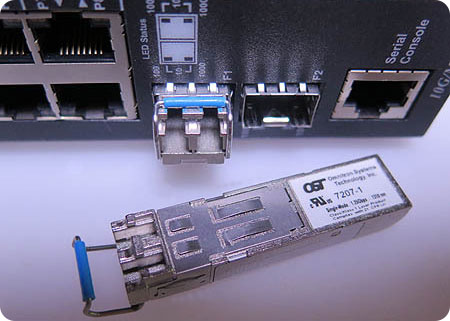SFP
Posted on December 20, 2022 by KVMGalore | 0 comments
SFP (small form-factor pluggable) is a compact, hot-pluggable network interface module format used for both telecommunication and data communications applications.

An SFP interface on networking hardware is a modular port/slot for a media-specific transceiver, such as for a fiber-optic cable or a copper cable. An SFP module is simply a small modular transceiver that plugs into an SFP port. An SFP module is hot-pluggable, which makes it easy to adjust existing networks without having to redesign the entire cable infrastructure.
The advantage of using SFPs compared to fixed interfaces (e.g. modular connectors in Ethernet switches) is that individual ports can be equipped with different types of transceiver as required.
SFP modules come in various types on the basis of different classification standards. They work with copper or fiber optics.
On the fiber optics side, there are single-mode SFP modules and multi-mode SFP modules, which allow users to select the appropriate transceiver according to the required optical range for the network.
At introduction, typical speeds were 1 Gbit/s for Ethernet SFPs and up to 4 Gbit/s for fiber SFP modules. In 2006, SFP+ specification brought speeds up to 10 Gbit/s.





